OPED BY: AIR MARSHAL ANIL CHOPRA (RETD.)
China’s People’s Liberation Army Air Force (PLAAF) and PLA Navy (PLAN) are developing newer variants of airborne ‘Force Multipliers’ such as Flight Refuelling Aircraft (FRA), Airborne Early Warning and Control (AEW&C), and Electronic Warfare (EW) aircraft.
China’s special mission aircraft can also take on signals intelligence/electronic intelligence (SIGINT/ELINT) or electronic attack (EA, jamming) missions. They are also racing ahead in space-based assets and unscrewed airborne platforms.
The airborne force multipliers greatly enhance operational capabilities and boost win-ability chances. Diverse airborne surveillance, command and control, and communications platforms combined with FRA enhance PLA’s battle-space awareness and engagements.
China has a long way to catch up with its competitor, the USA, on this count and, therefore, is displaying urgency. India is significantly behind China on this count. While the government and the Indian Air Force (IAF) have initiated actions, the same needs to be hastened to reduce the capability gap.
PLAAF’s KJ-2000 AEW&C
The KJ-2000 is a Chinese second-generation AEW&C aircraft developed by the Shaanxi Aircraft Corporation and was the first AEW&C system in service in the PLAAF. It is built upon a modified Russian Ilyushin Il-76 airframe using domestically designed avionics and a fixed radome featuring three active electronically scanned array (AESA) radars each covering a 120-degree sector.
China attempted to develop an indigenous AEW&C in the late 1970s, designated KJ-1. However, the project was canceled due to funding constraints. After witnessing the successful use of AEW&C in the Gulf War, these platforms became a priority for China.
The KJ-2000 development program started after the July 2000 cancellation of the A-50I deal with Russia and Israel due to strong American pressure against the export of the Israeli EL/M-2075 Phalcon radar.
Denied import options, China then went on to develop a domestic AEW&C, and the first aircraft made its maiden flight in 2003. The Russia-Israel variant finally went to India.
The Nanjing Research Institute of Electronics Technology (NRIET), a subsidiary of the China Electronics Technology Group Corporation (CETC), developed the multi-function, three-dimensional pulse-Doppler radar.
It is designed to detect and track airborne and surface targets. Operating in the frequency range of 1200–1400 MHz, it has a maximum aerial detection range of 470 km. Its flight characteristics are similar to those of the Indian A-50I AEW&C, which has a range of 5,500 km and 12 hours of endurance.
Only five Shaanxi KJ-2000 AEW&C aircraft could be built. The first flight was in 2003. Additional IL-76 airframes were not available, and Russians had jacked up the prize. The same constraint was faced by India. China’s attempt to build Il-76 variants domestically was also given up because of complex supply chain dynamics.
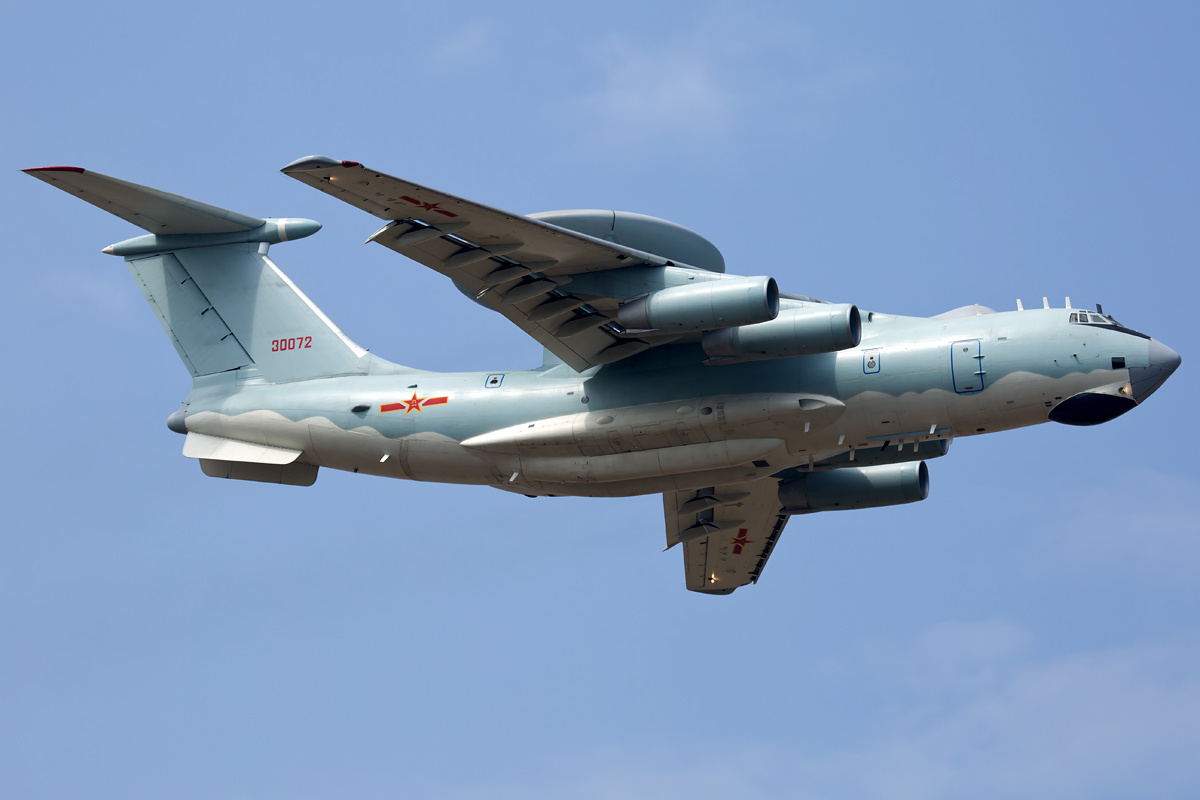
KJ-200 AEW&C
Shaanxi KJ-200 was a backup AEW&C to the KJ-2000. They installed a simplified system on board the smaller Shaanxi Y-8 airframe, the Chinese domestic variant of the Antonov An-12 tactical airlifter.
A “balance beam” lateral-scanning array similar to the Saab Erieye was installed. The platform of this aircraft is based on the Shaanxi Y-8F-600, and it has been reported that Pratt & Whitney Canada PW150B turboprops and Honeywell avionics have been incorporated. 11 were built for use by PLAAF and PLAN.
Shaanxi KJ-500 AEW&C
China also went on to develop the Shaanxi Y-9, an enlarged upgrade of the Y-8 that later served as the basis of the third-generation KJ-500 AEW&C aircraft, and the Xian Y-20, a large strategic airlifter being developed for AEW&C modification.
KJ-500 is a third-generation AEW&C aircraft used by both PLAAF and PLAN. Aircraft development began in the late 2000s with four major technical targets: networking, multi-functionality, high-integration, and lightweight. The aircraft carries a fixed dorsal radome containing three AESA radar arrays for 360-degree coverage and is said to be more efficient than the two-planar ‘balance beam’ array design used on the earlier KJ-200.
The KJ-500A variant debuted in 2022 and incorporates an aerial refueling probe. Twenty aircraft are with PLAAF, 14 with PLAN, and more are being produced. The aircraft reportedly has a range of 5700 km and an endurance of 12 hours. It can detect fighter-sized targets at a distance of 470 km.
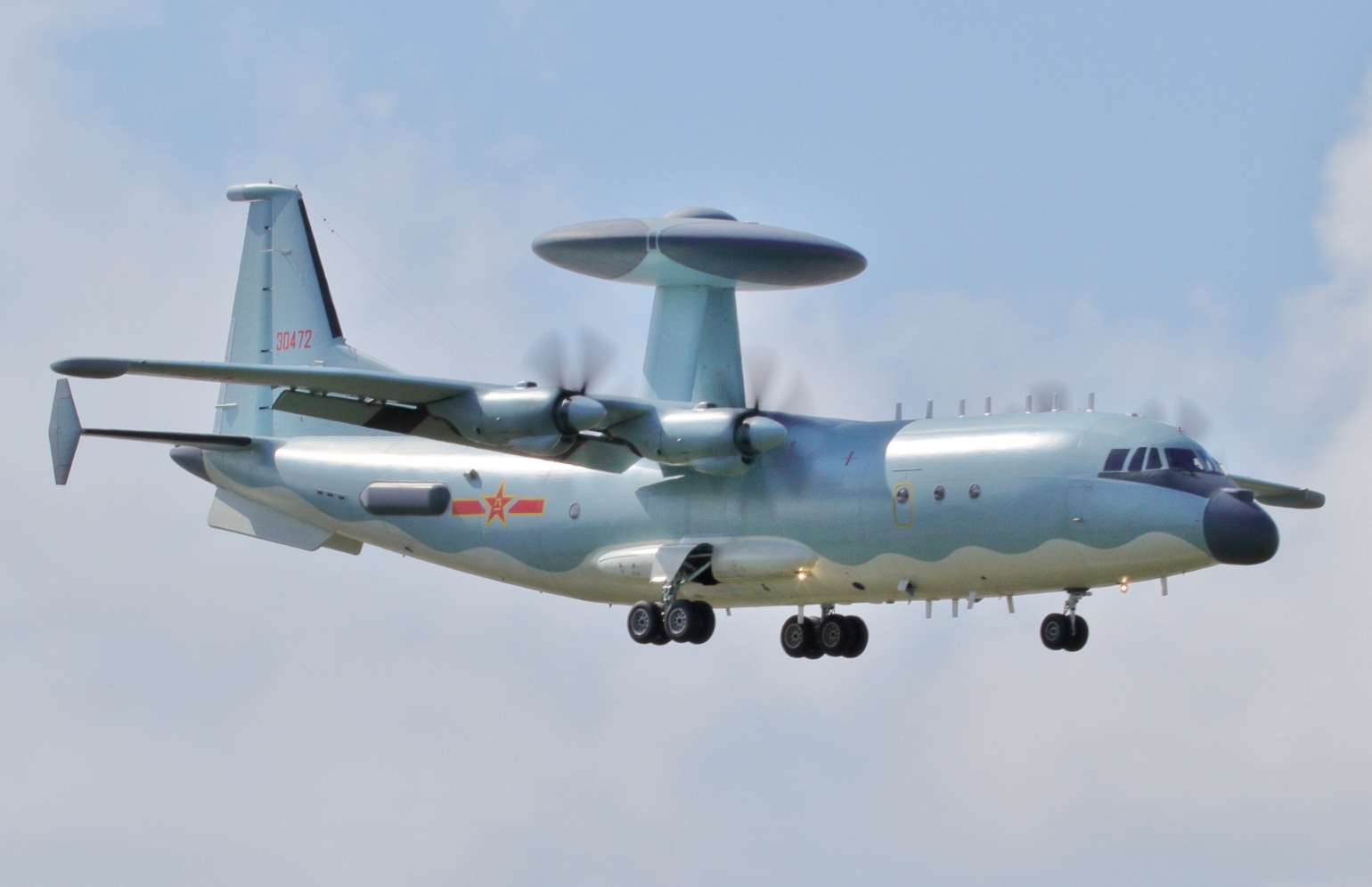
KJ-3000 AEW&C
The KJ-3000 is conceptualized around the Xi’an Y-20 large military transport aircraft and is targeted for its capability to detect stealth fighters.
Chinese media announced that Y-20 will soon have an AEW&C and FRA variants. The Y-20 tanker has already been under testing.
According to public papers published in China, the next generation AEW&C would have four capabilities: high detection capability, high anti-interference capability, high identification capability, and high battlefield management capability. The high detection capability of the fifth-generation stealth fighter aircraft is required to be over 360 km.
Other Chinese AEW&C
The Xi’an KJ-600 is a Chinese twin-propeller, quad-tail, high-wing military aircraft designed for cargo and AEW&C. It is intended to be deployed on Type 003 aircraft carriers of the PLAN from late 2024. It made its first flight in August 2020. Around four have been built.
China is also working on the contemporary development of conformal antenna technology, which greatly reduces major airframe changes and their aerodynamic complexities.
It also helps to make full use of the body space to arrange larger radar antennas, reducing the radar cross-section. It could later be applied to the Stealth bomber H-20 design and converted into an AEW&C.
China’s Flight Refuelling Aircraft (FRA)
China has a relatively small FRA fleet, considering its continental size and threat perception. This includes just three Russian IL-78, 10 Xian H-6U (18.6-ton fuel), and eight newly inducted Xian YY-20A.
The YY-20A, similar to the Il-78, can carry about 90 tons of fuel. The tanker variant, previously known as Y-20U, features redesigned landing gear. The YY-20 will enhance the PLAAF’s “long-range maneuver capability” while retaining its airlifting capability.
Large numbers of indigenous YY-20 are planned to be inducted in the coming years. The aircraft are meant to play a significant role in establishing domination in the South China Sea. They will be crucial for the Taiwan invasion and have already demonstrated aerial refueling of most PLAAF and PLAN fighters.
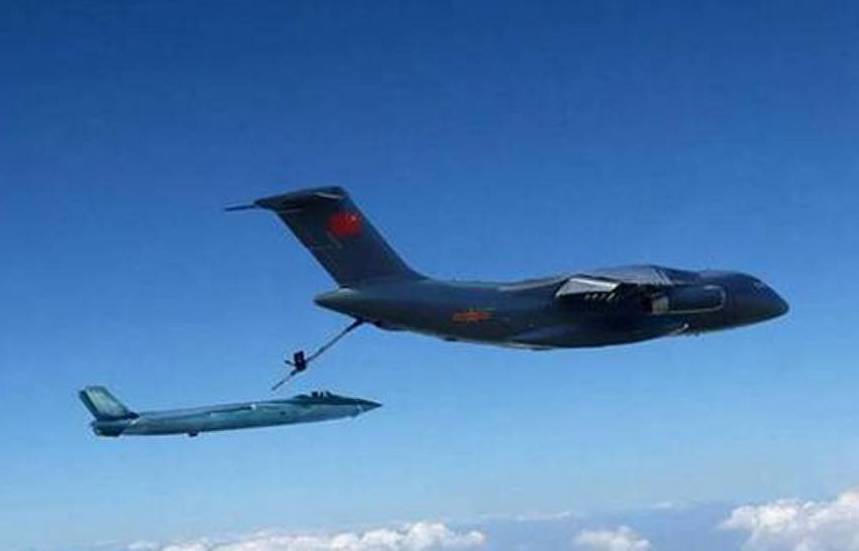
Reconnaissance & Electronic Warfare Aircraft
PLAAF still has around five old Bombardier Challenger 850 for SIGINT and a solitary Shaanxi Y-8 for surveillance. The bulk of their surveillance is handled using space-based assets and home-built uncrewed platforms. They also have four Tupolev Tu-154s for SIGINT / ELINT roles.
PLAAF is relatively stronger on Electronic Warfare, albeit the platforms are relatively old. These include 14 Shaanxi Y-8, 5 Shaanxi Y-9, and 3 Ukrainian Antonov An-30. They follow the Russian philosophy of brute power jamming and give lesser importance to sophisticated jamming techniques. PLAN also has 13 Chinese Y-8/Y-9-based ELINT aircraft.
Comparisons With The US
China is way behind the US and its partners in force multipliers. The US built 68 Boeing E-3 Sentry AWACS, most of which are still flying with the USAF or friendly foreign air forces.
They have seen operational deployments in all major wars, including by NATO in Ukraine. Japan has 4 Boeing E-767-based AWACS. Over 300 Northrop Grumman E-2 Hawkeye AEW&C were built. They can operate from large aircraft carriers and are operated by many American allies/friends. They have also seen active operations for many decades. Sweden’s Saab and Brazil’s Embraer have also built AEW&C aircraft.
Similarly, the US armed forces are way ahead in FRA. Having built over 60 KC-10A Extenders, 78 KC-46A Pegasus, and over 800 Boeing 707-based KC-135R and KC-135T Stratotankers, American tankers have seen global operations for decades. Large numbers are held by NATO and other partners.
The US also has a much larger fleet of dedicated Electronic Warfare aircraft. The EC-130H is used for electronic warfare and jamming, and the EC-130J for psychological operations and communications.
They also have specialized aircraft for global special operations missions. The MC-130J aircraft conduct infiltration, exfiltration, resupply, and refueling for SOF teams from improvised or otherwise short runways. The Boeing EA-18G Growler is an American carrier-based electronic warfare aircraft. Nearly 170 of these were built.
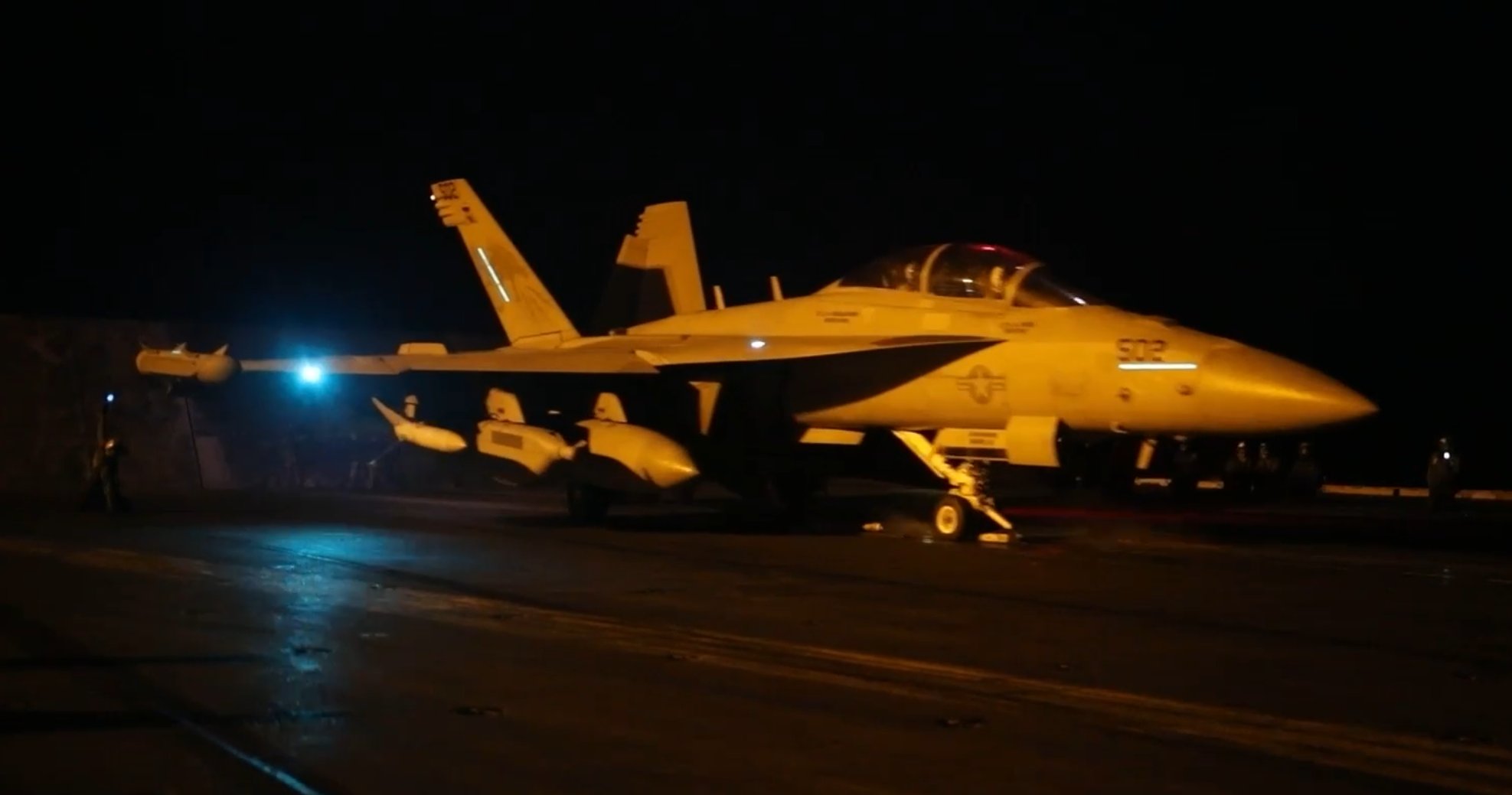
Time For India To Act
China will pull ahead as more Y-20-based AEW&C and FRA enter service. They are also improving the quality of electronics & radars, and jamming equipment. These aircraft can operate from many island airfields created in the South China Sea (SCS).
However, Chinese forces have near zero operational exposure. They have been tested during training with small air forces like Pakistan, but Chinese force multipliers have not been seen at any airshows outside China.
At best, they have been seen by Japanese aircraft in the East China Sea and by the Americans in SCS. The KJ-600 may require another two years to be operational on an aircraft carrier.
China also produces CH-series HALE/MALE UCAVs, which are Predator-type drones. China is working on the flying wing design GJ-11, which is very similar to the US Navy X-47B UCAV. They have a significant lead over India in unscrewed platforms and drones, although India is trying to catch up on drones.
The IAF currently operates three indigenous DRDO Netra Embraer ERJ 145I AEW&C aircraft, and three EL/W-2090 Phalcon AEW&C incorporated into a Beriev A-50 platform.
IAF has sought six additional ERJ 145I Netra. India is also investing in a DRDO project to develop six new AEW&C aircraft on pre-owned airline aircraft as an upgrade to the Netra systems. These additional aircraft may be available by around 2028.
The IAF currently operates six Ilyushin Il-78MKIs as FRA. Attempts to acquire additional FRAs in the last nearly two decades were unsuccessful due to technical and procedural reasons.
It has now been decided that India will convert six pre-used A-320 class aircraft into FRAs through local or OEM-supported modifications.
India long had dedicated EW aircraft, but the last of these were phased out nearly two decades ago. The Mirage 2000 fleet brought in a modern EW suite, including ELINT pods and escort jammers.
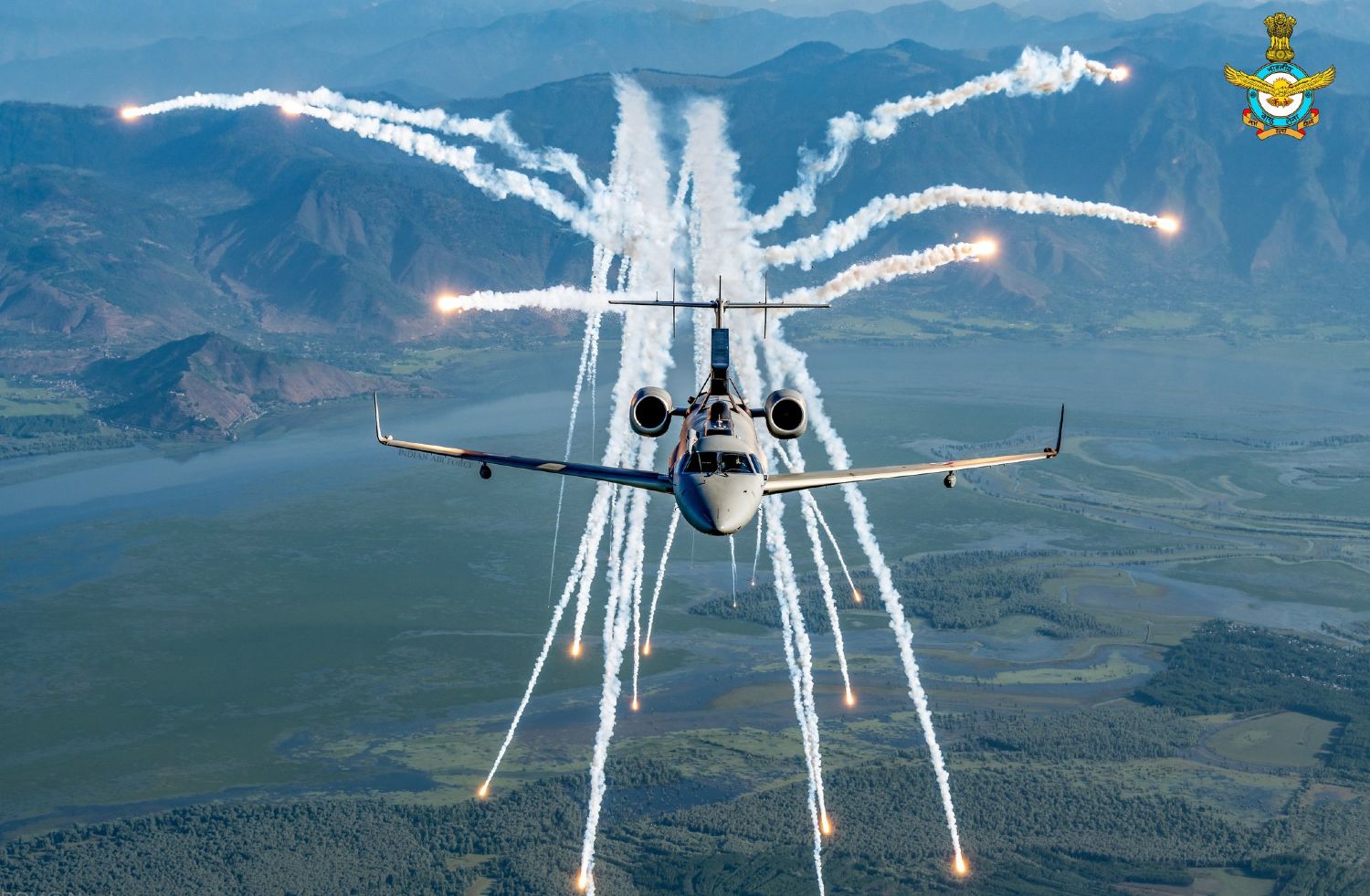
All IAF fighters and transport aircraft have some elements of a protective EW suit. The Rafale has a state-of-the-art EW suite.
India, too, is a continental-sized country. It is among the most threatened nations in the world, with two nuclear-powered neighbors with whom it has serious territorial disputes and has had wars.
The two could collude during hostilities. India will require assets covering both its borders. Therefore, the existing force multipliers are highly inadequate. Even Pakistan has more AEW&C than India as of date.
The writing has been on the wall for long. The requirements have been well-flagged by the security establishment. Decision-making was earlier slow. India has a long way to get the desired force multipliers in numbers and capability.
The political executive has now become conscious and is pushing for more assets and indigenous capabilities. It is time to hasten, lest we get left further behind.
- Air Marshal Anil Chopra (Retired) is an Indian Air Force veteran fighter test pilot and the former Director-General of the Center for Air Power Studies in New Delhi. He has been decorated with gallantry and distinguished service medals while serving in the IAF for 40 years. He tweets @Chopsyturvey
- Follow EurAsian Times on Google News




